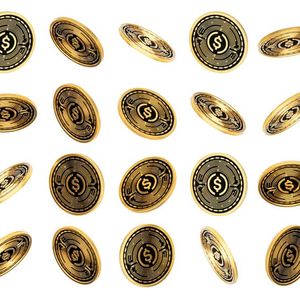Circle: The Next Crypto Headache
5 min read
Summary Circle’s stock has rallied at an impressive rate since its IPO in June. However, the company faces major risks that can disrupt its business and undermine the future growth of its share price. Circle is SELL for us right now. Circle Internet Group ( CRCL ) has experienced an explosive rally since its IPO in June, soaring by triple-digit percentages in just a few weeks. While the potential implementation of the GENIUS Act and a growing enthusiasm for stablecoins have fueled the rally, we believe the market has misinterpreted Circle’s business model and overestimated the longevity of its revenue stream. Currently, Circle’s business model is interest rate-sensitive and is centered around the reserve income from its flagship USDC stablecoin, which carries major risks in our opinion. In addition, the company’s most important distribution partner, Coinbase, claims a disproportionate share of that income, which greatly limits Circle’s upside. With a forward non-GAAP P/E of 147x , Circle is also greatly overvalued and is an extremely risky investment right now. For all of those reasons, we decided to rate Circle as a SELL. The Upside Just Isn’t There Circle’s business model is tied to interest rate cycles. The company generates more than 95% of its revenue from interest on reserves backed by its USDC stablecoin. This may sound like a fintech version of the traditional banking model, but it lacks key features that banks use to manage interest rate risks. Those features include lending spreads, hedging instruments, or fee diversification mechanisms. Considering that the latest version of the GENIUS Act requires reserves to be held in the form of short-term, liquid US Treasury bills or cash, its full passage in Congress could prevent Circle from hedging its yield risk with longer-term instruments. As a result, the company is extremely vulnerable to lower rates. According to Circle’s own prospectus , a 100 basis point drop in rates could reduce revenue by more than $400 million, which is roughly 25% of its revenue for fiscal 2024. This could become a major issue later this year since we are likely going to see the start of another round of interest rate cuts by at least 0.5% in September and December under the base case scenario. As such, it’s safe to say that Circle’s core profitability is at risk if rates decrease. At the same time, this is not just our speculation on the matter. The company itself has indicated that this could become an issue in its IPO prospectus. Circle IPO prospectus (company investor relations) Also, it’s worth considering Circle’s business relationship with Coinbase. At first glance, Circle’s partnership with Coinbase may seem like a strategic opportunity to grow the business. However, if we look closely at the details of their partnership, it becomes clear that it could be considered an economic liability for Circle. After all, Coinbase receives up to 60% of the reserve revenue, depending on how much USDC is stored on its platform. This revenue-sharing arrangement effectively caps Circle’s gross profit, and as Coinbase’s share of USDC circulation grows, the squeeze only gets worse over time. That’s why it’s not a surprise to see that in 2024, Circle generated $1.66 billion and paid out over $907 million to Coinbase alone. This severely limits Circle’s ability to reinvest in new growth verticals or weather macroeconomic headwinds. What’s worse is that as Circle adds more distributors to expand USDC adoption, its overall payout obligations are expected to grow even further. This one-sided economic situation highlights a serious structural problem. Circle is trying to build a long-term infrastructure business on top of short-term rentals, but it is also paying a lot for access. This makes us believe that the upside for Circle just isn’t there. The Intrinsic Value of a Circle Our valuation model shows that Circle’s intrinsic value is only $131.13 per share. With interest rate and other risks highlighted above on the rise, we believe that a ~40% depreciation of its shares is viable at this point. The math behind our intrinsic value calculation can be seen below. The perpetual growth rate in the model is 3%, which we use all the time when valuing US companies . The model was created when Circle was trading at $233.20 per share. The balance sheet data has been taken from the latest report. The discount rate in the model is 11.11%. We calculated it by figuring out Circle’s cost of equity and cost of debt. To calculate the cost of debt, we used its TTM numbers . To calculate the cost of equity, we used the CAPM model, using a risk-free rate of 4.30% and a market return rate of 7.77%. Due to the recency of Circle’s IPO, there is currently no reliable beta available for the company. The stock has experienced extreme price volatility since listing, with short-term price action reflecting speculative sentiment rather than true systemic risk. That’s why we assumed the beta to be 2, which reflects the elevated risk profile associated with Circle’s business model. Circle’s valuation model (Bears of Wall Street) Our revenue and EBIT forecasts for Circle are broadly aligned with the consensus expectation . Using these assumptions, our model calculates Circle’s enterprise value at $6.47 billion. By adding cash and cash equivalents and deducting total outstanding debt, we arrive at an equity value of $7.27 billion. After that, we divided the company’s equity value by the number of its outstanding shares and figured out that Circle’s intrinsic value is $131.13 per share, which is around 44% below the current market price. Considering the high valuation and all the risks described above, we decided to rate Circle as a SELL. Circle’s valuation model (Bears of Wall Street) Risks To Our Bearish Thesis While we remain firmly bearish about Circle at current levels, there are several possible scenarios that could challenge our view on this company. Firstly, broader adoption of USDC in real-world commerce, particularly through integration with platforms like Shopify, Stripe, or Coinbase’s Base Layer-2 network, could accelerate reserve growth beyond current expectations. If Circle can scale USDC as a de facto digital dollar for mainstream transactions, the revenue base could expand even if interest rates fall. Secondly, the potential restructuring of the revenue-sharing agreement with Coinbase would be a significant positive. If Circle can renegotiate more favorable terms or diversify its distribution network to reduce its reliance on any partner, then the margin pressure could ease. Thirdly, international expansion and institutional partnership with companies like Visa and Mastercard could open up new non-yield revenue streams and would offer a greater growth potential over time. Also, if interest rates remain higher for longer than forecasted, then Circle could continue to generate increased yield-based income in the foreseeable future. Final Thoughts Circle may be one of the pioneers of the stablecoin space, but its current valuation ignores critical risks like the rate sensitivity, over-distribution of revenue, and increased competition. Because of that, it makes the most sense to rate its stock as a SELL right now.

Source: Seeking Alpha



